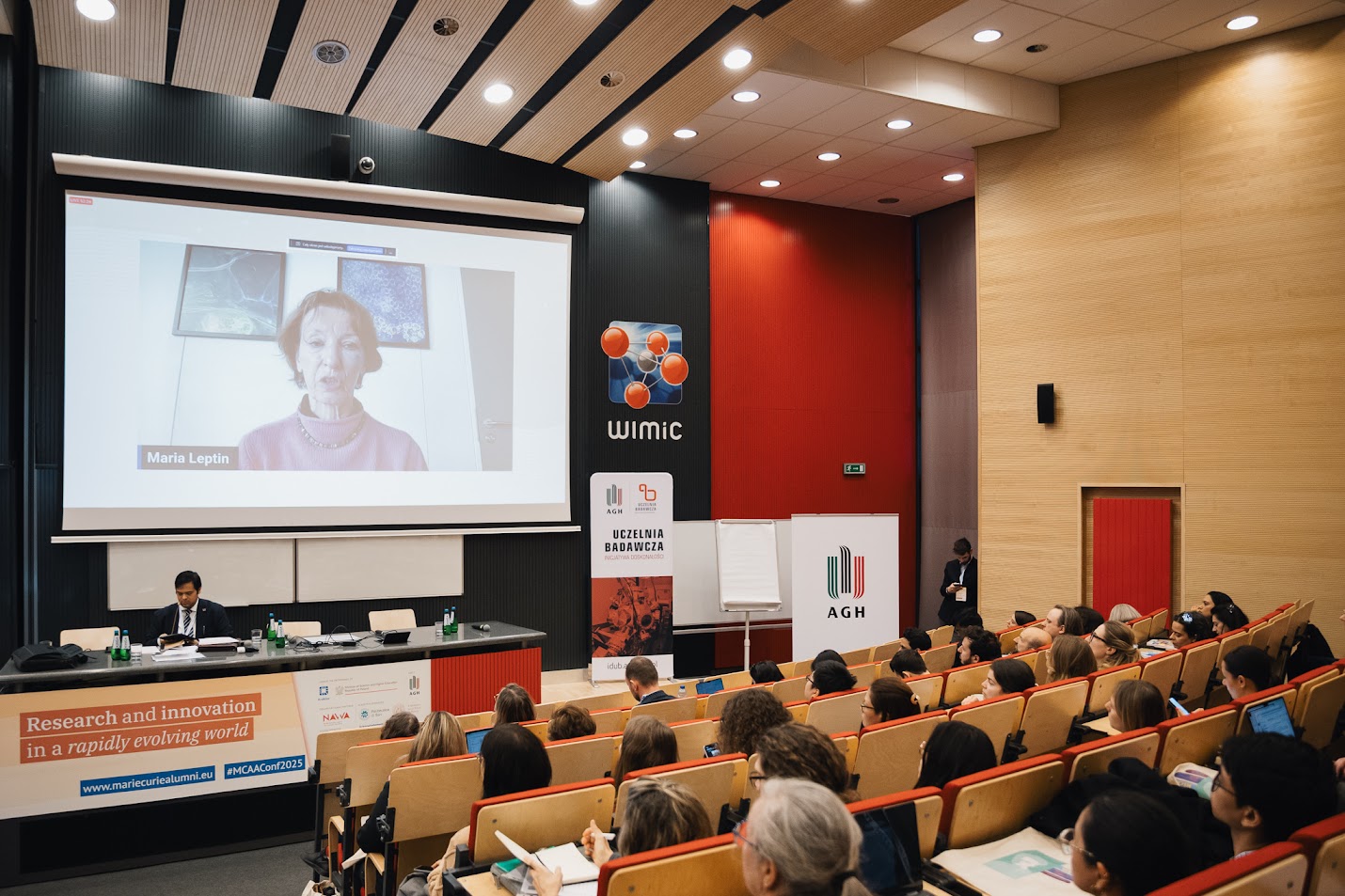MCAA Annual Conference 2025 - Quo vadis Science Communication?
Newsletter
As scientists, we must foster science communication because it helps ensure that scientific discoveries and evidence inform public decisions, policies, and everyday choices while also combating misinformation and making science more inclusive, transparent, and connected to real-world concerns.
Science communication was running like a red line over several sessions at the recent MCAA Annual Conference. This summary distils key statements, recommendations, and visions for advancing science communication in Europe and beyond.
Next-Generation Science Communication
As a red line through multiple speeches and multiple panels came the necessity of impactful science communication. Most of the community members already know how to disseminate their science, break down complex statements, tailor messages to target audiences, and explain the core nature of science – its inherent uncertainty. Also, many MCAA members engage in participatory, community-driven, and citizen science projects, and these collaborations continue to grow every year.
Even though people trust the scientists— more than 80% of respondents worldwide reported at least moderate trust in scientists (Cologna et al., 2025)—they often don’t follow scientific recommendations. “Misinformation spreads six times faster than the truth, mostly because of its emotional tone,” noted Subhra Priyadarshini, Board Director at the World Federation of Science Journalists and editor at Nature India.

Quo vadis Science Communication?
Joana Magalhães and Isabel Mendoza, in their COALESCE policy brief (Magalhães & Mendoza, 2025), stated: “Recently, expert reports from Draghi, Letta and Heitor have highlighted the urgent need to enhance EU competitiveness by prioritising research and innovation, offering bold visions for outlining the trajectory and funding for the next R&I framework programme.”
Warnings Around the Globe
Strengthening EU policy in science aligns with growing global threats to scientific freedom. “Cutting of research is very short-sighted,” emphasised Maria Leptin, President of the ERC, during her introductory speech. “It shows how fragile we are.”
Moniek Tromp, President of the Initiative for Science in Europe, added a hopeful note: “We need to be active and influence the move in the right direction.” She further encouraged scientists to continue making an impact—not just on knowledge, but on economics and, ultimately, our collective future.
Paweł Rowiński from the ALLEA federation offered practical advice: “We should remove all bureaucratic obstacles and not work against freedom in science.”

Maria Leptin, President of the ERC, during her welcoming speech
How to Make an Impact
As mentioned, many MCAA members are involved in participatory projects or interdisciplinary initiatives such as science- art collaborations. But what truly makes a difference?
“Science must meet people where they are,” stressed Subhra Priyadarshini. We must listen to each other, or even better: “Prioritise listening over speaking to build a channel for trust,” she adds. Scientists and institutions should create spaces for two-way communication.
To complete this, according to Agata Gurzawska from the VERITY project, “We should seek new platforms.” That means leaving our ivory towers and our press release conferences, seeking real people, and talking to them. Or chat. Or play. “We should humanise the science, make stories, infographics, animation, or use gamification,” Subhra concluded. She also recommends integrating science communication training into every PhD curriculum.
Furthermore, evidence-based decision- making can attract not only policymakers and politicians, but also their voters. And with trust comes funding, opportunities, and collaborations. “Without individual actors, we will not achieve anything. We need collaboration, multiple stakeholders, and multidisciplinarity,” shared Agata.
So What?
Based on the shared findings, I ask—how do we make a real impact?
What measures can we take to shift public mindsets?
Can we convince society—and, in turn, politicians and decision-makers—of the true value of science?
How do we change the world?
“Highly excellent science must be protected,” summarised Maria Leptin.
Eliška Koňaříková
Bluesky
LinkedIn
MCAA Newsletter Editor-in-Chief
newsletter.editor@mariecuriealumni.eu
References
Cologna, V., Mede, N.G., Berger, S. et al. (2025). Trust in scientists and their role in society across 68 countries. Nature Human Behaviour. https://doi.org/10.1038/s41562-024-02090-5
Magalhães, J., & Mendoza, I. (2025). Boosting the Science Communication Ecosystem in Europe - full steam ahead. A policy report. Zenodo. https://doi.org/10.5281/zenodo.14771424
Williamson, P. (2016). Take the time and effort to correct misinformation. Nature, 540(7632), 171. https://doi.org/10.1038/540171a

Quo vadis Science Communication?